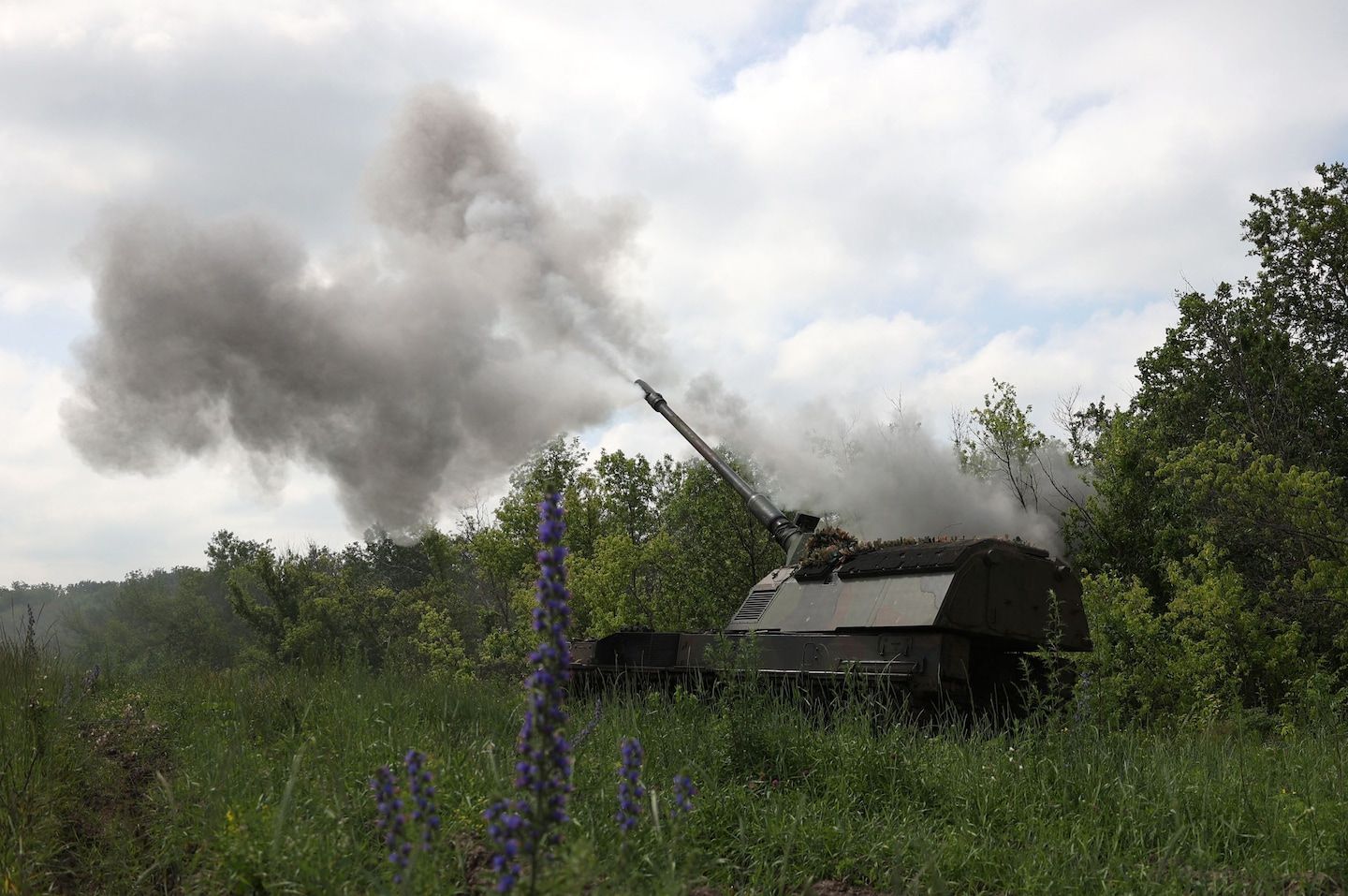What are cluster munitions that Biden is set send to Ukraine?
Listen 4 min Comment on this story Comment Gift Article Share
Following months of debate within his administration, President Biden has approved the provision to Ukraine of long-sought cluster munitions, bypassing legal restrictions. The munitions are banned in much of the world. Here is what to know about them and why they are so controversial. Are you on Telegram? Subscribe to our channel for the latest updates on Russia’s war in Ukraine. ArrowRight What exactly are cluster munitions? Dating back to the 1940s, cluster munitions disperse submunitions over wide areas. The munitions are launched using the same artillery the United States and other Western nations have sent to Ukraine since the start of the war, including howitzers.
The United States has a stockpile of cluster munitions, but is last known to have used the weapons in battle in Iraq in 2003, according to the Associated Press. The United States is not providing Ukraine with cluster bombs intended to be dropped from planes.
Advertisement
On Thursday, Human Rights Watch published new evidence suggesting that Ukrainian forces have already injured civilians by use of cluster munitions, which Russian forces have used far more extensively, also causing civilian deaths.
How cluster munitions work Cluster munitions release a deadly rain of smaller submunitions over an area. The cluster munitions that the United States is set to provide to Ukraine are launched from artillery pieces. Launch Muntion is fired from the ground 1 Separation The shell disburses a bombardment of small explosives 2 Submunitions Detonation Submunitions land — most detonate, some do not 3 Source: Army training manual 9-1025-215-10 How cluster munitions work Cluster munitions release a deadly rain of smaller submunitions over an area. The cluster munitions that the United States is set to provide to Ukraine are launched from artillery pieces. Submunitions 1 2 3 Launch Muntion is fired from the ground Separation The shell disburses a bombardment of small explosives Detonation Submunitions land — most detonate, some do not Source: Army training manual 9-1025-215-10
Why is the United States sending them to Ukraine?
Facing diminishing Western stocks of artillery rounds and deeply entrenched Russian forces, the Ukrainian counteroffensive, intended to return the country to preinvasion borders, has progressed slower than Western officials had hoped.
Amid Ukrainian frustration over Western expectations in the absence of overriding artillery superiority and fighter jets yet to arrive, President Volodymyr Zelensky was pushing the American government for cluster munitions, claiming they are the most effective way for Ukrainian forces to push quickly though expansive Russian trenches and deadly minefields.
Why are cluster munitions controversial?
Over 120 nations have joined a convention pledging not to use the weapons because of their indiscriminate nature. Not only do they fall over a very wide area, which leads to potential civilian casualties during conflicts, but many submunitions fail to explode on impact. This means they can continue to kill or maim people long after a war has ended.
Advertisement
The International Committee of the Red Cross said in 2010 that between 10 and 40 percent of ordnance released by cluster munitions used in recent conflicts failed to explode immediately, presenting a major threat to civilians. The Convention on Cluster Munitions prevents the use, development, stockpiling or transfer of the munitions. But Russia, Ukraine and the United States are not signatories to the agreement.
For the past seven years, Congress has stipulated that cluster munitions with a failure rate of more than 1 percent cannot be produced, transferred or used. But the munitions in question, the M864 artillery shell, dates back to 1987 and may have a “dud” rate of 6 percent, according to the last public assessment by the Pentagon from over two decades ago. The Pentagon said it has more recent assessments of 2.35 percent or below, but that would still be above the limit set by Congress.
In its new report, Human Rights Watch accused Moscow and Kyiv of using the weapons since the February 2022 invasion, leading to deaths and serious injuries among civilians. In one incident in the early days of the war, Ukrainian authorities and witnesses alleged Russian used the munitions in an attack on a train station that killed 50 people. Mary Wareham, acting arms director of Human Rights Watch, said the weapons “are killing civilians now and will continue to do so for many years.”
What other nations use cluster munitions?
Evidence suggests Russia has used cluster munitions to a greater extent than Ukraine since invading the country last year. Human rights organizations documented and heavily criticized the United States over its extensive use of cluster bombs during the initial years of the Afghanistan invasion.
Advertisement
Israel fired millions of cluster munitions into Lebanon in 2006, during a short conflict against Hezbollah, which also fired cluster munitions into Israel. The United Nations estimated that of the 4 million submunitions fired by Israel, up to 1 million remained unexploded at the end of the conflict, killing Lebanese civilians.
The munitions have been used by both Russian and Syrian forces in Syria, destroying cities like Aleppo and killing civilians amid the civil war there. Human Rights Watch documented Saudi Arabia using cluster munitions made by the United States against Houthi rebels in Yemen, a move the group said leaves civilians in an already deadly region in added danger due to unexploded ordnance.
Karen DeYoung, Alex Horton, Missy Ryan, Claire Parker and William Neff contributed to this report.
Gift this article Gift Article
Source: The Washington Post


